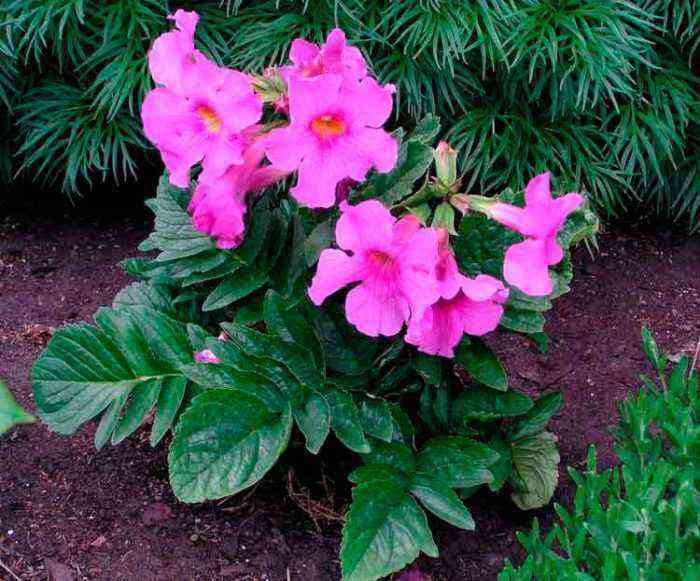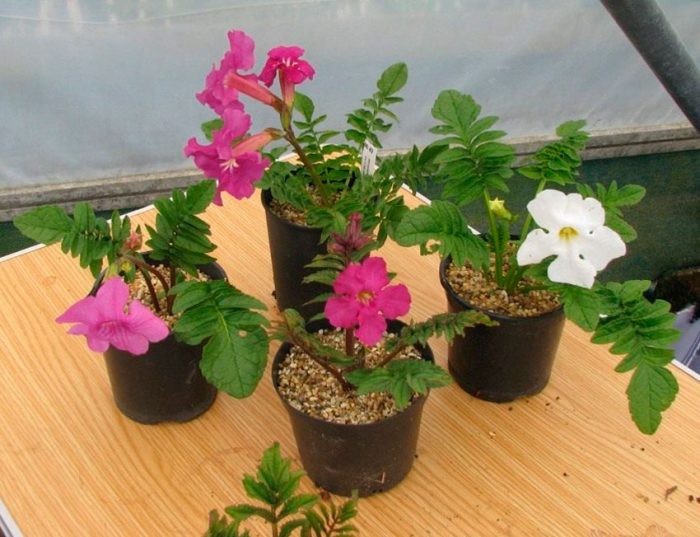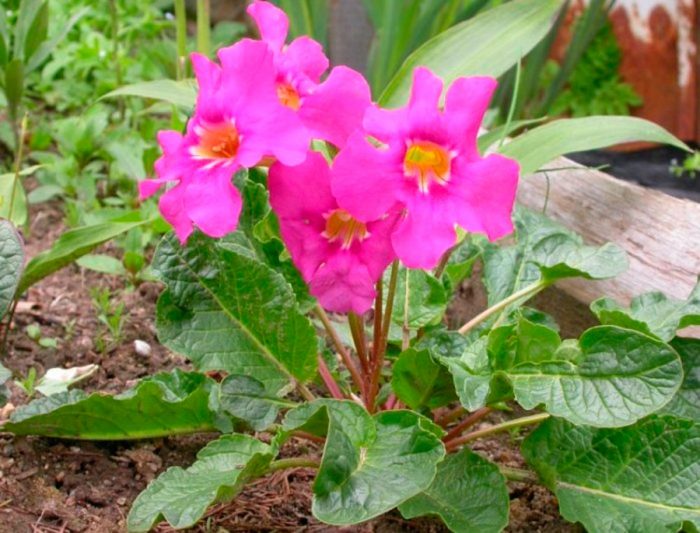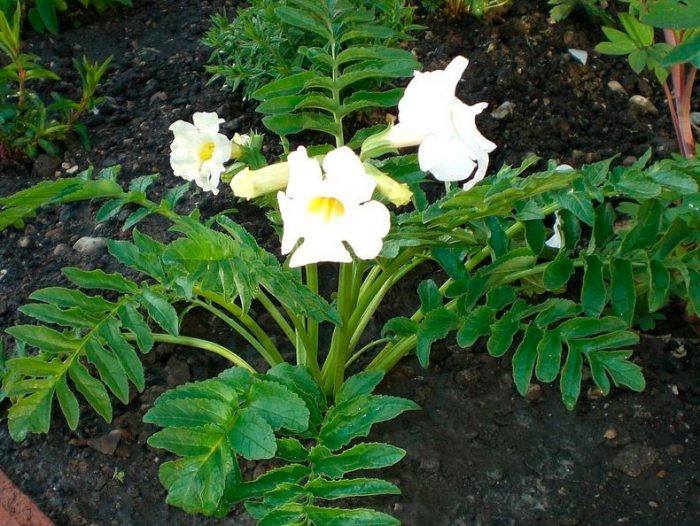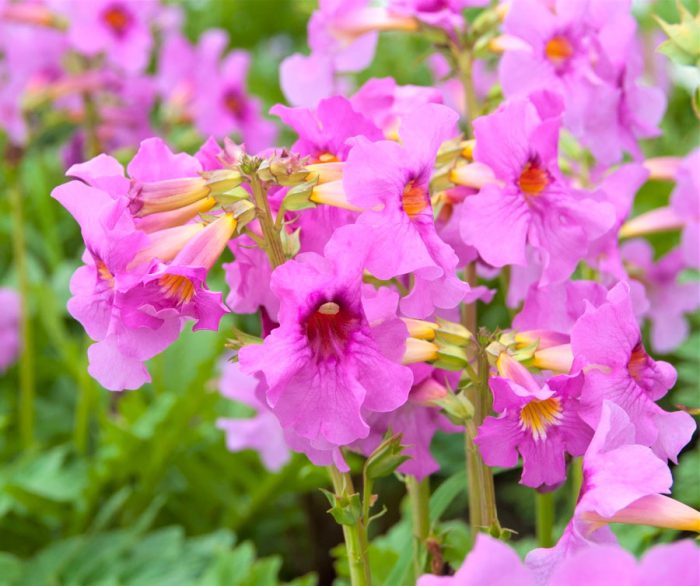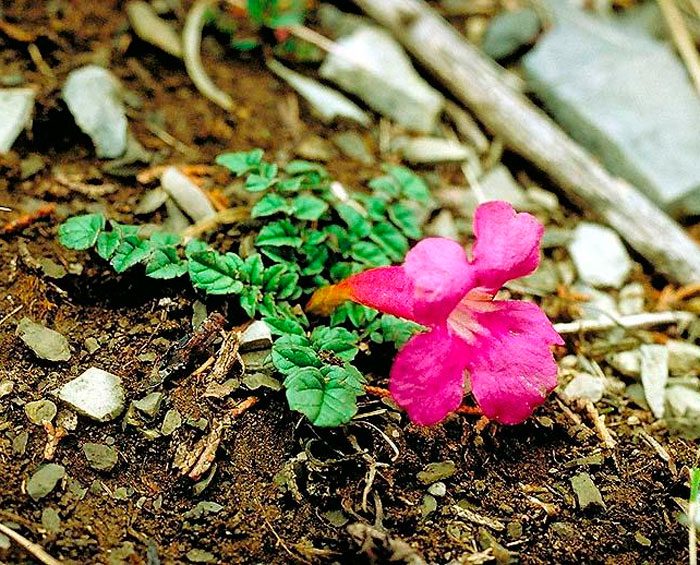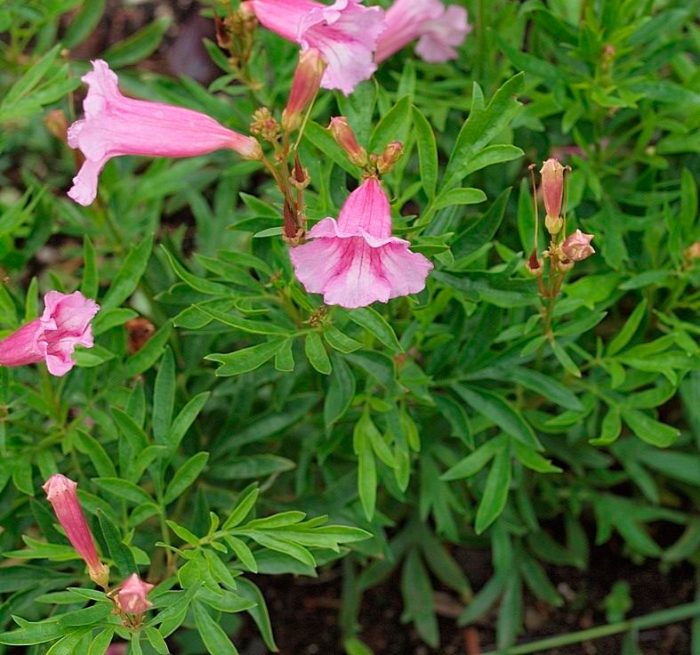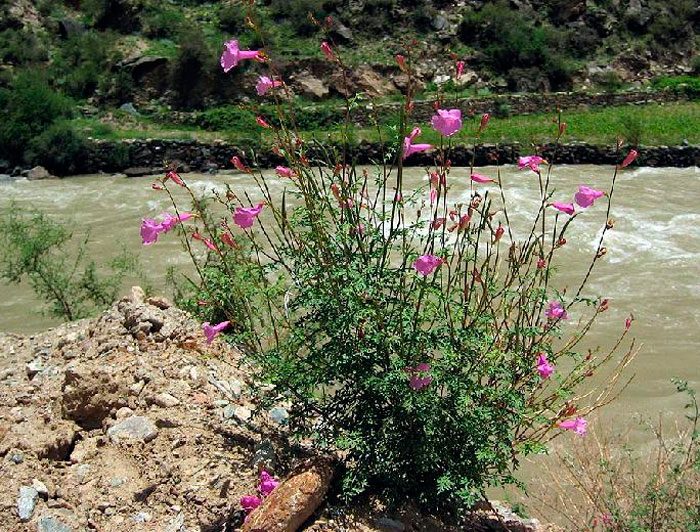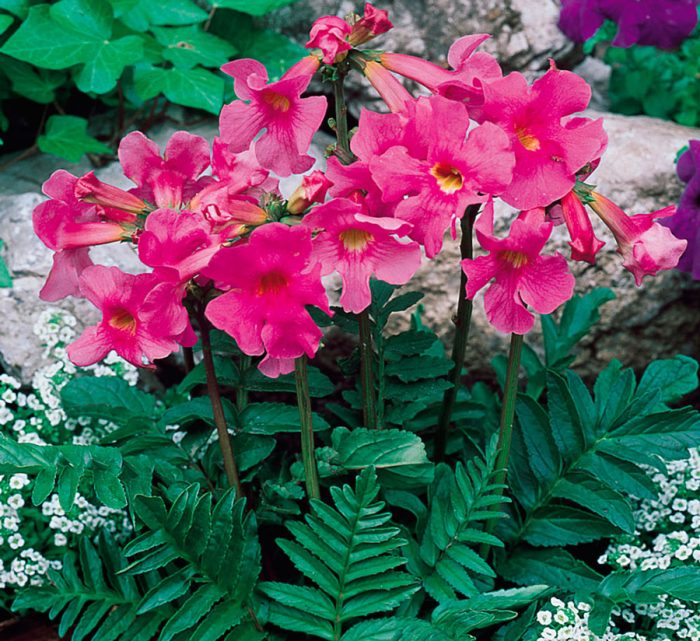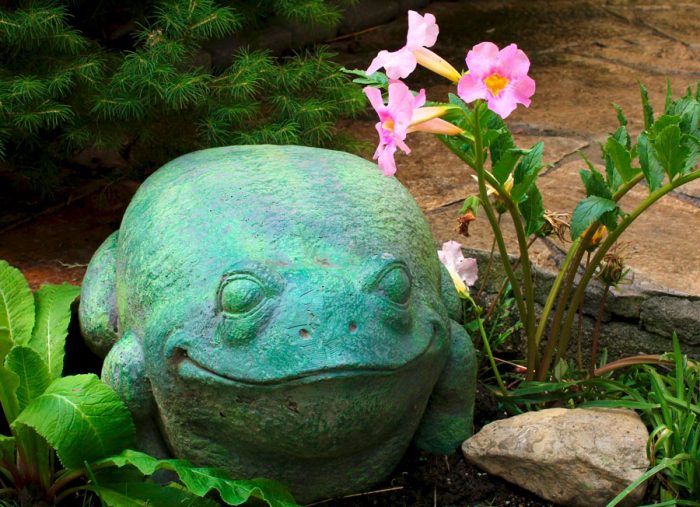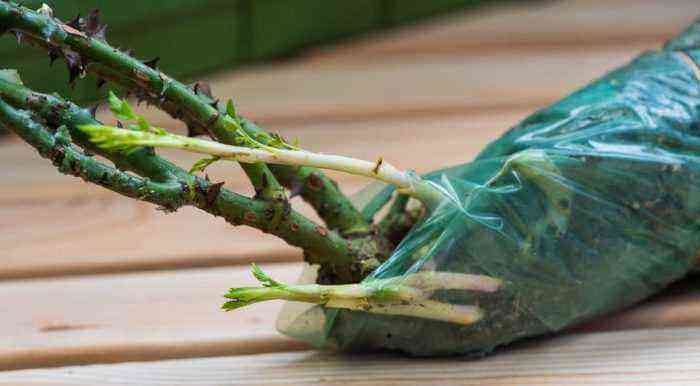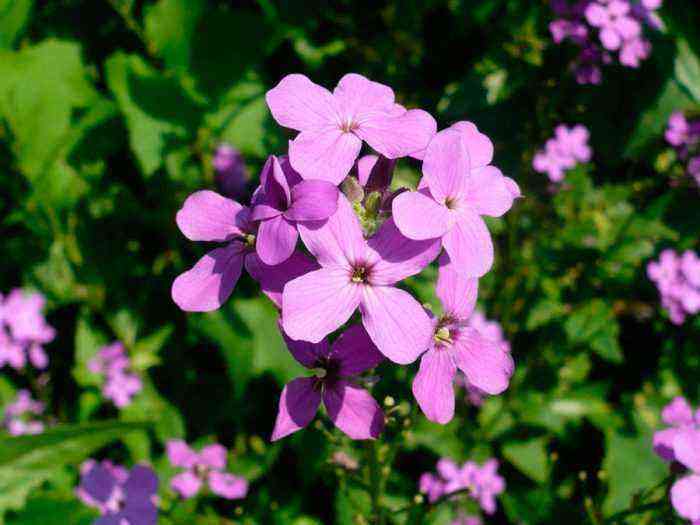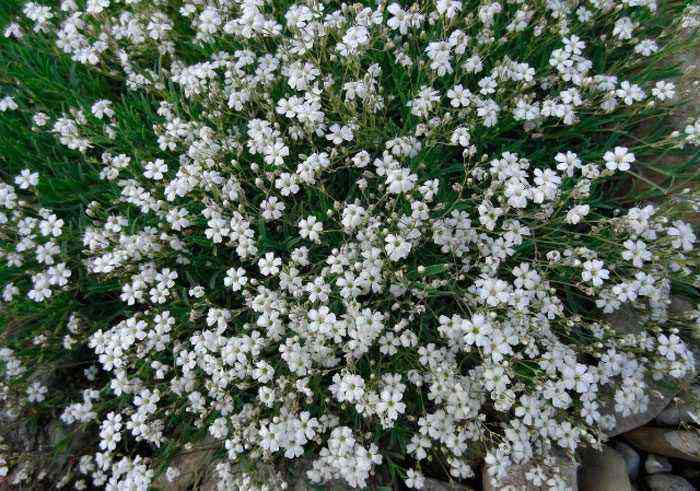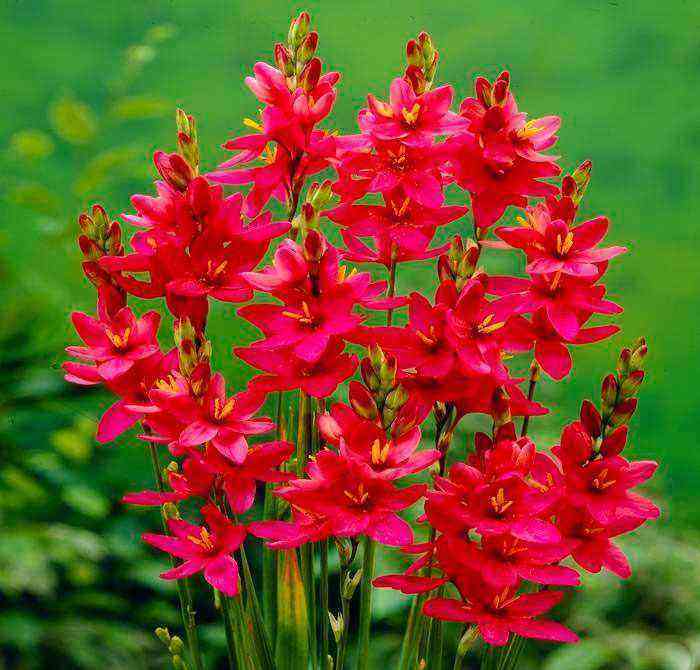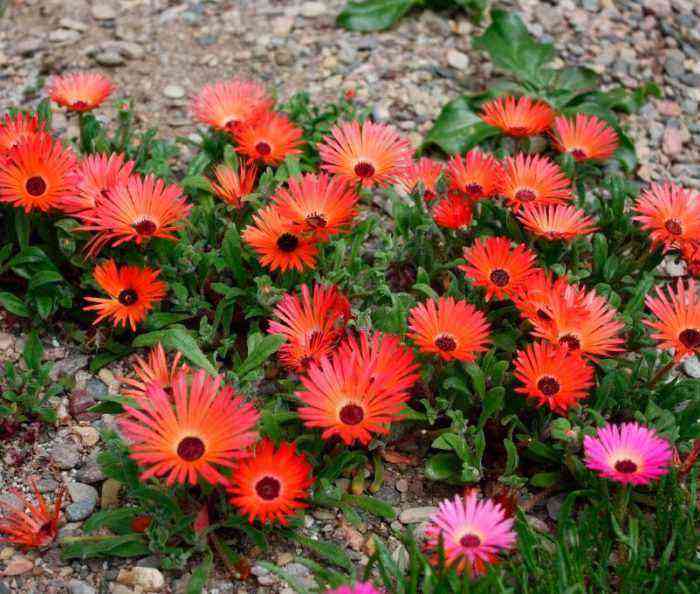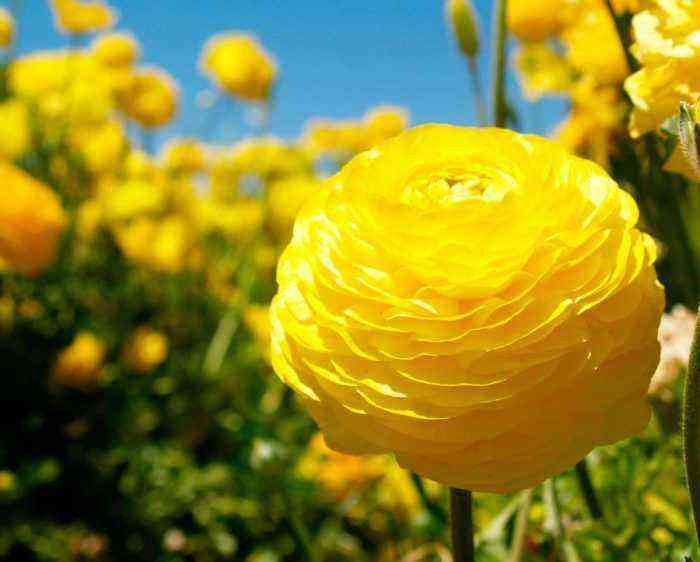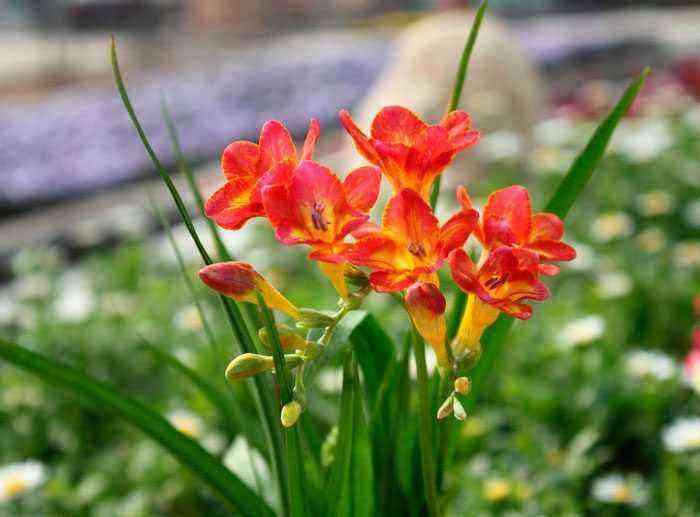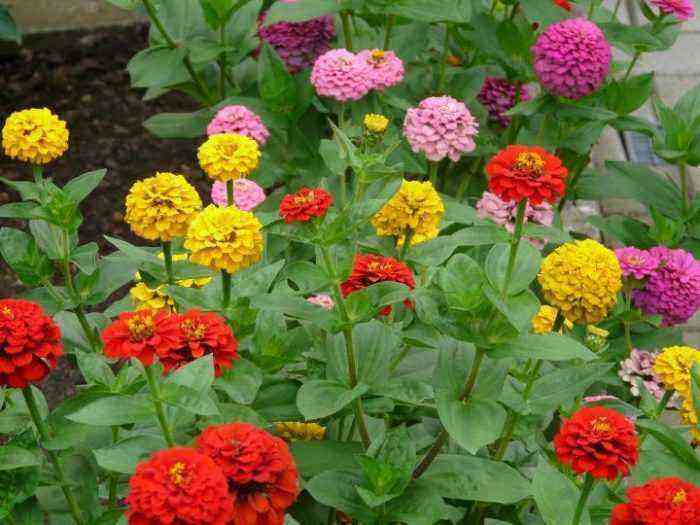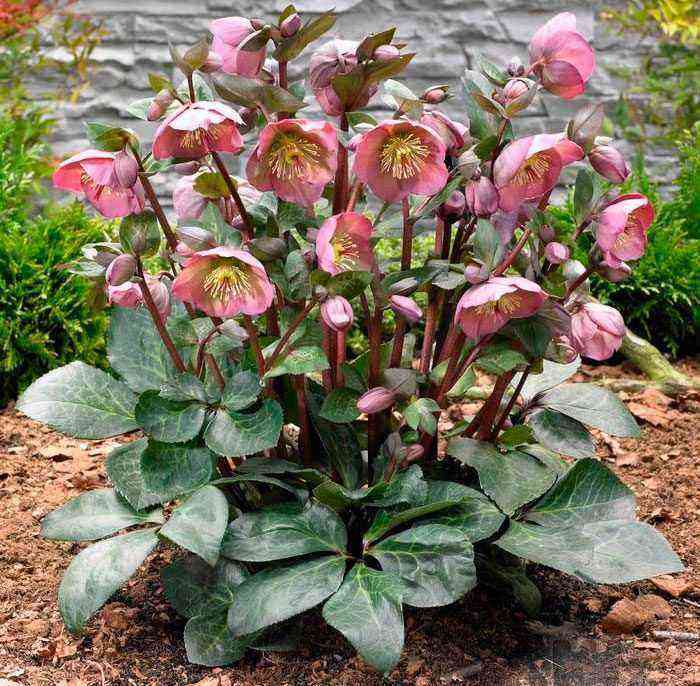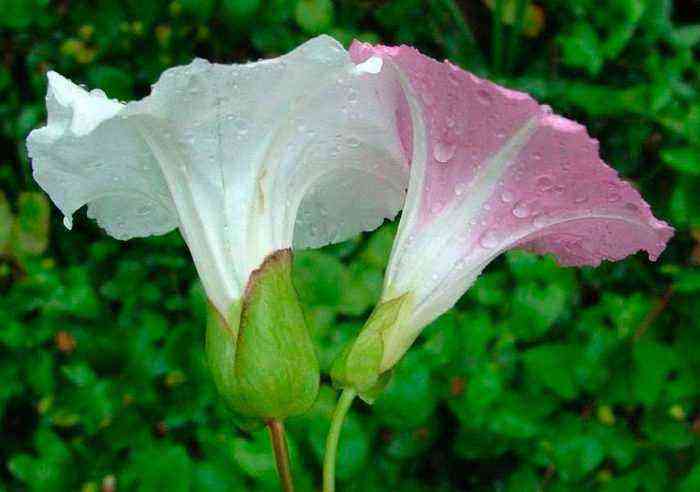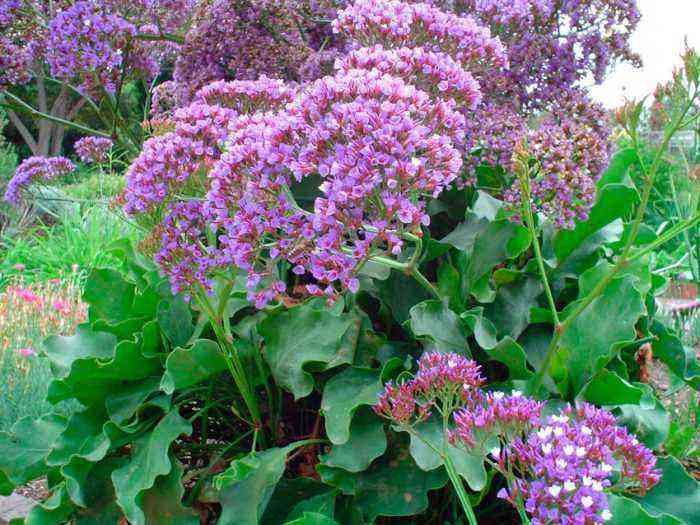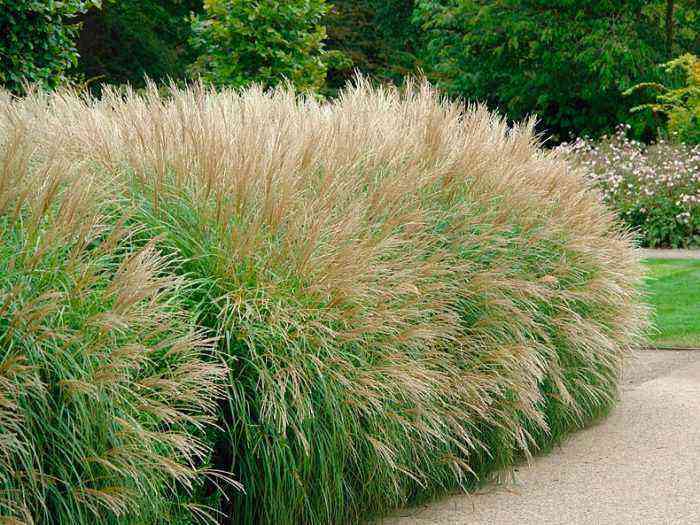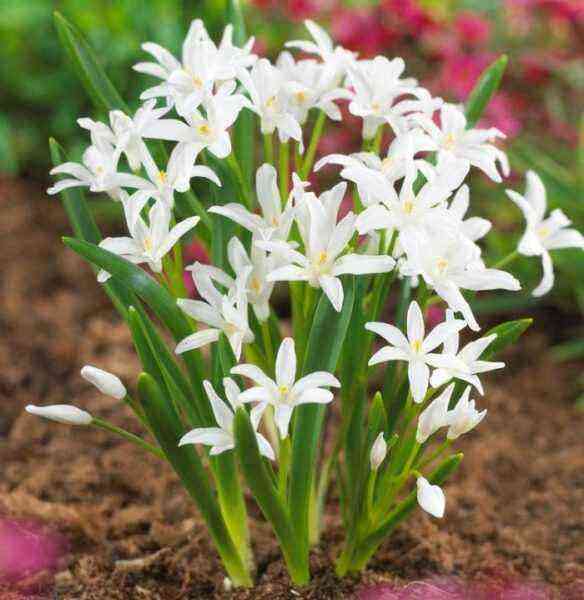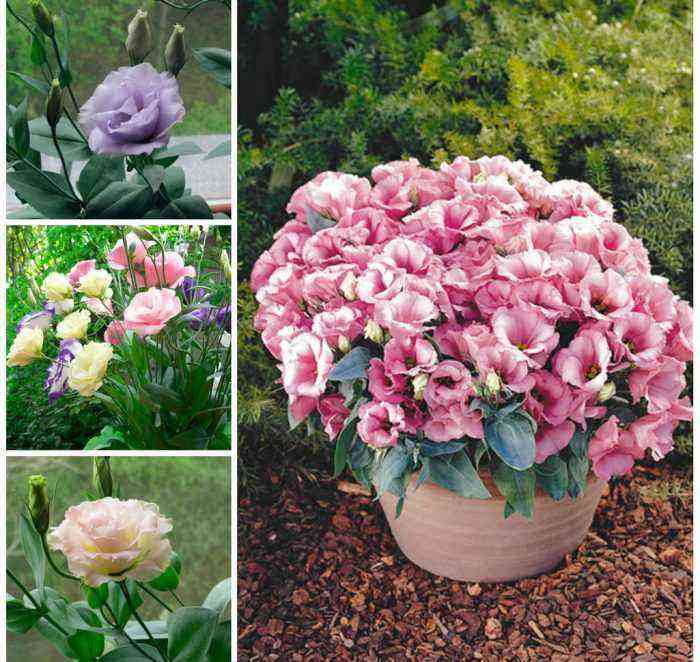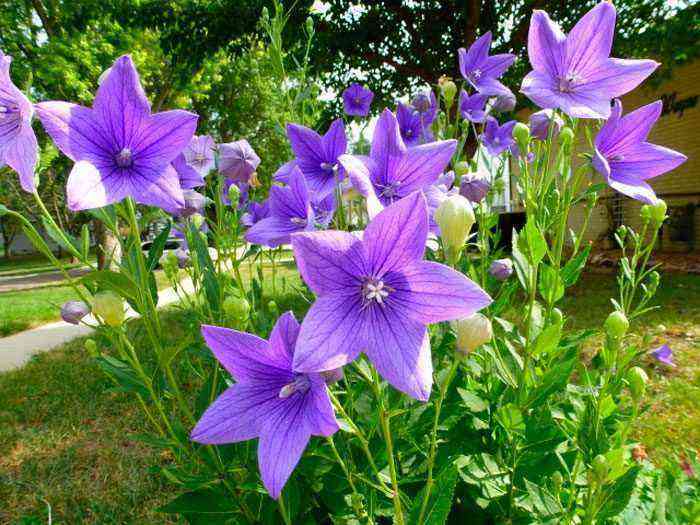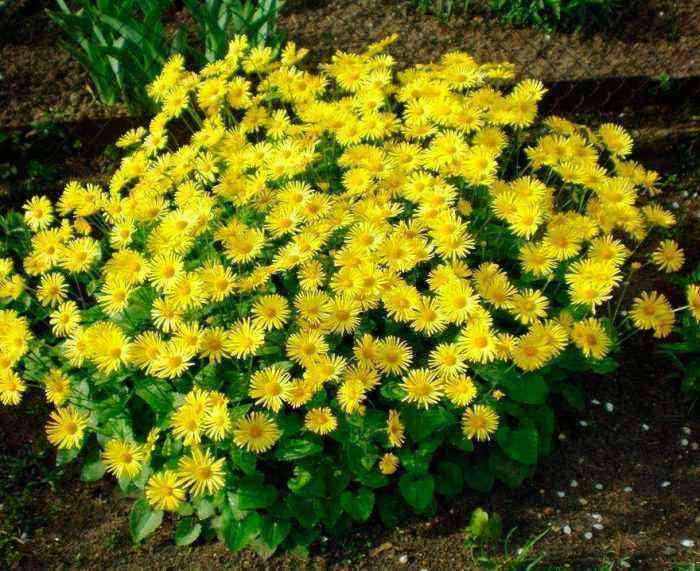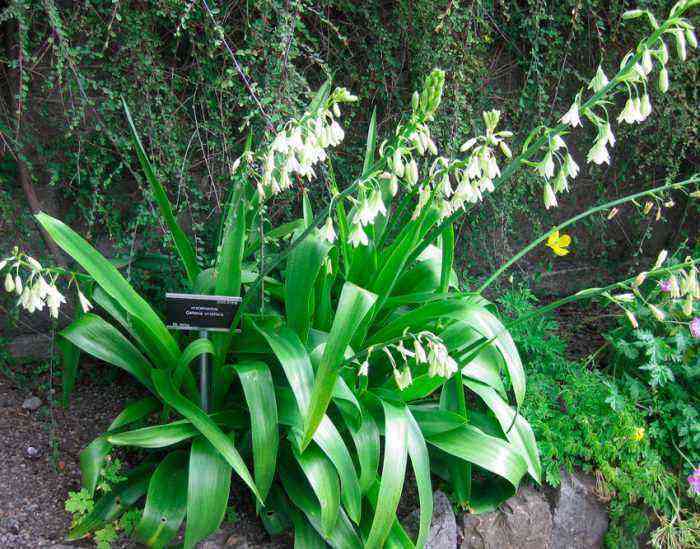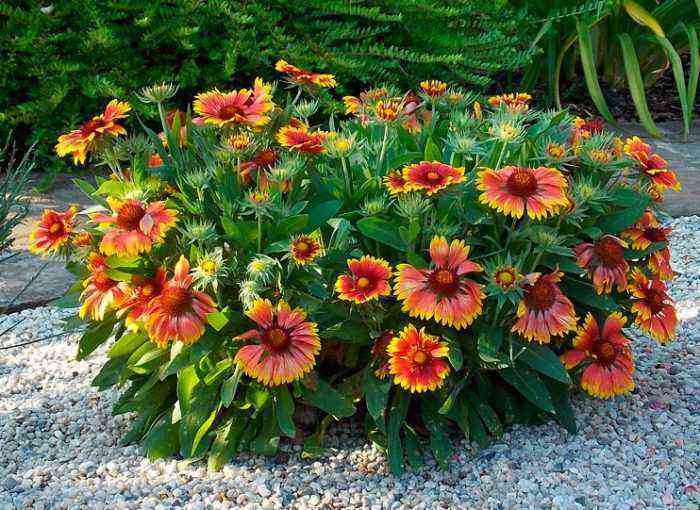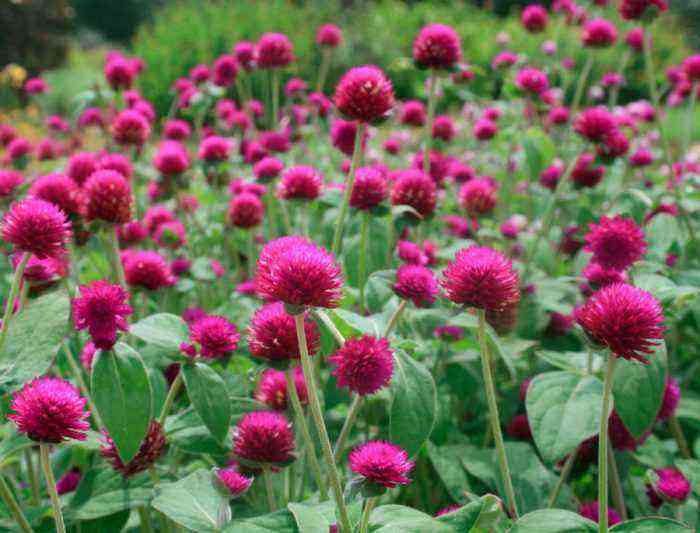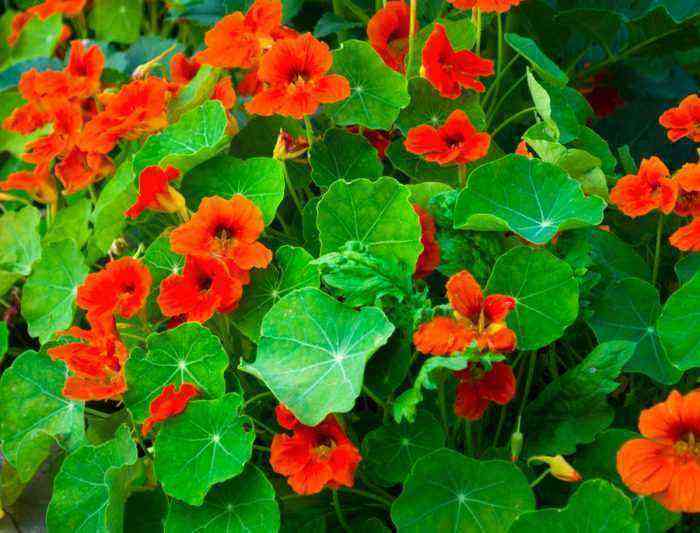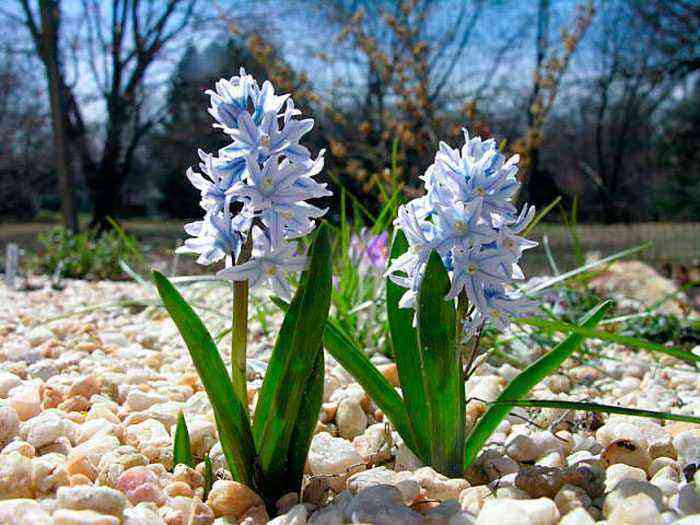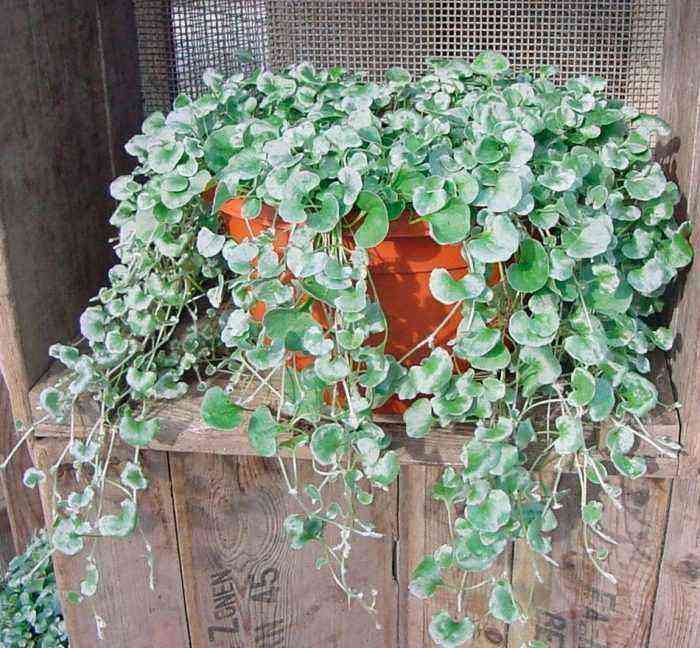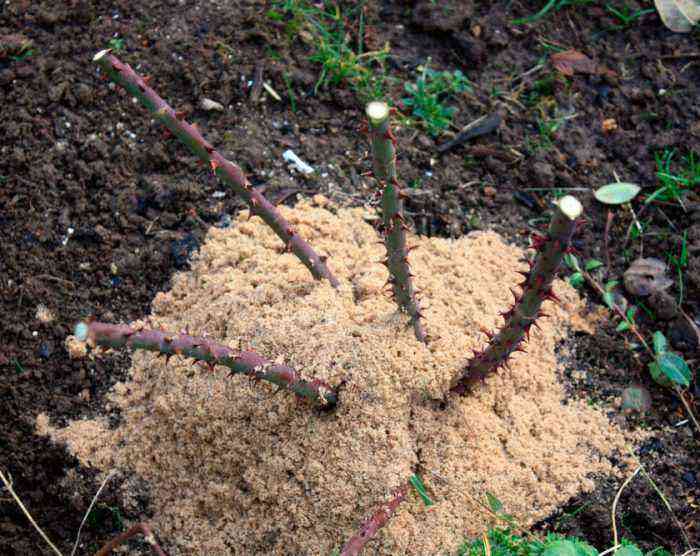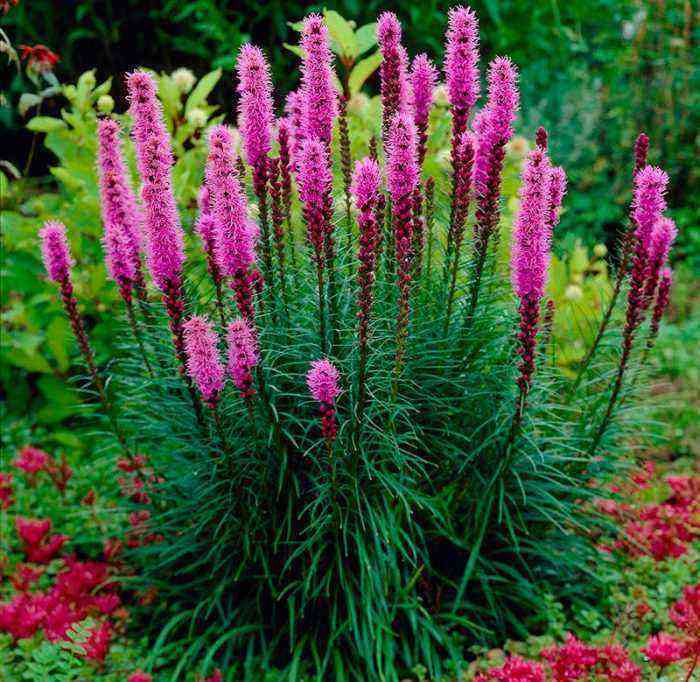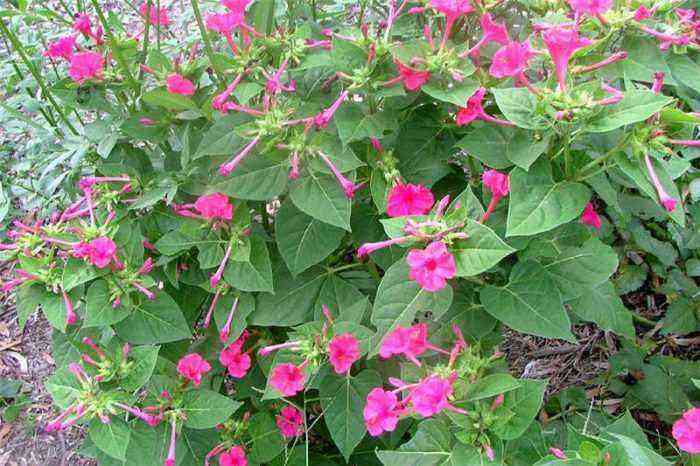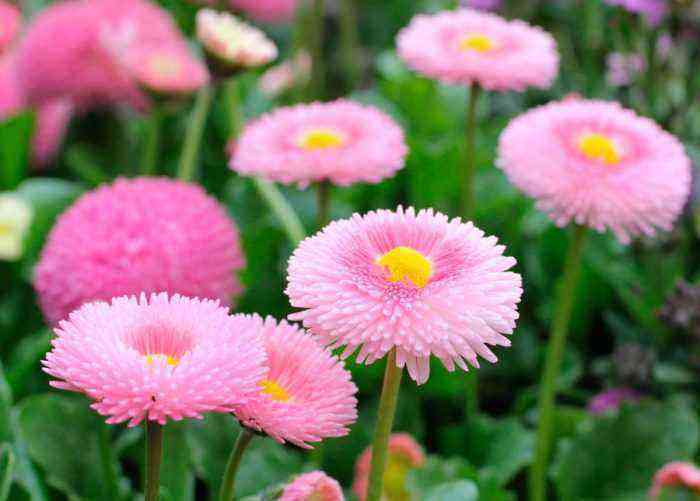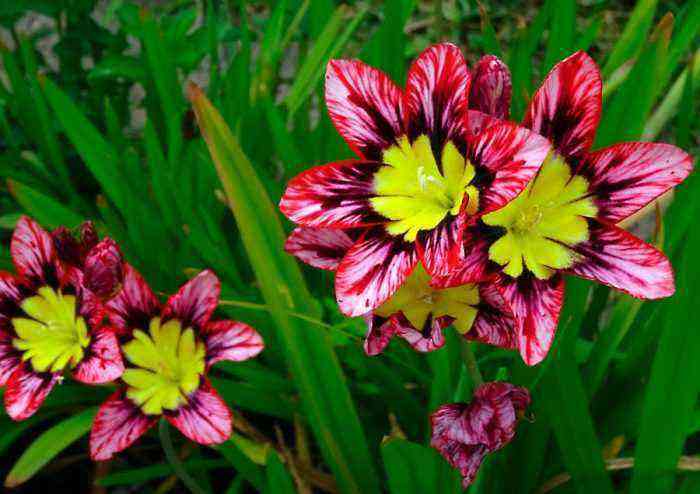The herbaceous plant Incarvillea is a member of the Bignonieva family. According to The Plant List, this genus unites 17 species. The scientific name for such a plant was given in honor of Pierre Nicolas d’Incarville in China, who collected a large collection of plants, in which there are also representatives of this genus. In the wild, this herb can be found in Central and East Asia and the Himalayas. As a rule, cultivated varieties of this genus are called garden gloxinia.
Features of incarvillea
The Incarvillea herb can be an annual, biennial, or perennial. The height of the bush can reach 200 cm. The roots are tuberous or woody. Erect stems are simple and branched. Collected in a basal rosette or alternately located leaf plates are unpaired-finger-dissected with a finely toothed edge. Five-part flowers, with a tubular corolla and a bell-shaped calyx, are collected in the terminal inflorescences of a paniculate or racemose shape. The flowers are colored red, yellow or pink. The fruit is a bipartite polygonal capsule containing winged, pubescent seeds.
Planting incarvillea outdoors
What time to plant
Growing an Incarvillea in your garden is easy enough. Such a culture is grown through seedlings. Seeds are sown in March. It should be noted that the seeds of such a plant have a relatively high germination capacity. In the soil mixture, the seeds must be buried 10 mm, then they are covered from above with a layer of pre-calcined and had time to cool down river sand. Crops need to be watered and removed to a warm place (from 18 to 20 degrees). The first seedlings should appear after about 7 days. It is extremely undesirable to dive such plants, since they are very difficult to tolerate this procedure. In this regard, it is recommended to use peat pots for sowing seeds and growing seedlings. Seedlings are planted in open soil in the last days of April, and they are planted directly in these pots. If the seedlings are grown in a common container, then after the first pair of true leaf plates begin to form in the plants, then they need to be cut into individual cups.
If you are going to grow a perennial or biennial Incarvillea, then in this case, sowing seeds can be done directly in open soil, and this can be done in April – July. The optimum temperature for seedlings to appear is about 15 degrees, in which case they will appear in about 15 days. But it should be remembered that a plant grown in this way will begin to bloom only the next year.
Rules of landing
To grow such a flower, it is recommended to choose a site located on a hill (slopes or hills), since it reacts extremely negatively to stagnant fluid in the root system. If the planting is carried out in excessively dense soil, then experts recommend that when creating a flower garden, it is imperative to make a good drainage layer, for this you can use coarse sand, broken brick or crushed stone. For Incarvillea, you can choose a well-lit and open area, but it should be noted that the bushes must be shaded in the afternoon. A suitable soil must be nutritious and light, for example, sandy loam. It is recommended to pour a handful of ash and long-lasting fertilizers into the planting holes during planting of seedlings. Seedlings are taken out of the cups very carefully, because the root system is very fragile and can be easily injured. When planting a plant in open ground, it should be remembered that its root collar should be slightly buried in the soil. Around the planted plant, the soil should be well tamped, after which it is watered abundantly.
Caring for Incarvillea in the garden
How to water and feed
It is very easy to care for Incarvillea. It needs to be systematically watered, weeded and loosened the soil surface around the bushes. It is necessary to water the flowers in moderation, adhering to the following rule: do not allow the soil to dry out, as well as stagnation of liquid in the root system. When it rains or the plants are watered, the surface of the soil near the bush should be carefully loosened, while pulling out all the weeds.
The first time the bushes need to be fed with a complex mineral fertilizer after the flower begins to actively grow greenery. The second feeding should be done during bud formation. Also, such a culture can be fed with a solution of bird droppings or mullein. Starting from July 20, all feeding is stopped. Annuals are simply not needed at this time, and they harm perennials, as they reduce their resistance to frost.
How to propagate and transplant
Incarvillea can be propagated generatively (seed) and vegetatively: by leaf cuttings and by dividing tubers. How to grow such a flower from seeds is described above.
You can carry out the reproduction procedure by dividing the tubers in March or September. After the bush is removed from the ground, it is cut into several parts, while it must be borne in mind that there must be a renewal point and at least one tuber on each cut. Places of cuts should be sprinkled with crushed coal. Then, parts of the bush are planted in pre-made planting holes, while the growth point must be buried in the ground by 40-50 mm.
Reproduction by leaf cuttings is carried out in the summer, or rather, in June-July. To do this, a mature leaf plate with a part of the stem measuring from 30 to 50 mm must be cut out of the socket. The cut site must be treated with a solution of an agent that stimulates root growth, for example, Kornevin. Then the leaf cuttings are planted in a soil mixture consisting of peat and sand, after which the box is removed to the greenhouse. Initially, the roots grow at the cutting, then a leaf rosette is formed, and already in the next season it will be possible to see the flowering of a young bush.
Wintering
Incarvillea must be covered for many years in preparation for winter, especially in those regions where winters have little snow. The site is covered with a layer of compost, sawdust or peat; instead, it can be covered with spruce branches. It should be noted that the thickness of such a layer must be at least 60 mm. In the spring, the shelter must be removed, otherwise the tubers may resist. When preparing for winter, young bushes can be covered with a plastic bottle with a cut off neck or a glass jar on top. If incarvillea is grown in regions with frosty winters, then it is recommended to remove the tubers from the soil in the fall, immerse them for a while in Maxim’s solution, dry and store them until spring.
Diseases and pests
Most often, Incarvillea is affected by root rot. If liquid stagnates in the soil, this can cause the development of putrefactive processes. The tubers are very strongly affected, and it is often impossible to cure the bush. When the first symptoms of wilting appear, all the bushes must be sprayed with a solution of a fungicidal drug, for example: Fundazol, Skor, Topaz, etc. In addition, the number of waterings should be reduced, as well as their abundance, if this is not done, the bushes can get sick again.
Mealybugs and spider mites most often settle on such flowers. Such pests are sucking. They suck the cell sap from the bush. It is possible to understand that “uninvited guests” have settled on the plant by deformed and decayed leaf plates, shoots and flowers. To get rid of harmful insects, Incarvillea should be treated with acaricide, for example: Aktara, Aktellik, etc.
Types and varieties of incarvillea with photos and names
Several different types and varieties of Incarvillea are cultivated by gardeners.
Incarvillea mairei (Incarvillea mairei = Incarvillea grandiflora = Tecoma mairei)
The homeland of this species is Northwest China. Basal long-petiolate leaf plates have a lyre-like weakly pinnately dissected shape and rounded lobes. The leaves reach 0,3 m in length. The flowers are painted in a dark red-purple color, on the surface of the yellow throat there are specks of white color. Such a flower has a relatively high frost resistance. This compact and beautiful species begins to bloom in the first weeks of the summer.
Incarvillea compacta
This herbaceous perennial is found in the wild in Northwest China, Tibet and Central Asia. The height of smooth stems is about 0,3 meters, a slight pubescence is located on their surface. Basal pinnate leaf plates have whole heart-oval lobes. The apical flowers, reaching 60 mm in diameter, are purple in color, their throat is yellow. Duration of flowering from 20 to 30 days. You do not need to cover the bushes for the winter. This species has a large-flowered variety, the height of such a bush is about 0,8 m, the basal leaf plates have a pinnately-divided shape. In diameter, the flowers reach 70 mm, they are painted in pink-purple color. This variety has varieties with white, pink and salmon pink flowers. Cultivated since 1881.
Olga’s Incarvillea (Incarvillea olgae)
This view comes from the Pamir-Alai. This perennial plant reaches a height of about one and a half meters. The bare stems are branched in the upper part, they sometimes woody at the base. Opposite leaf plates have a pinnately dissected shape. The leaves growing at the top of the stem are solid. The loose apical paniculate inflorescence reaches about 0,25 m in length, it consists of pink-red flowers, reaching 20 mm in diameter. The plant blooms in the first weeks of July, and the flowering duration is about seven weeks. This species is not distinguished by high frost resistance, therefore, when grown in mid-latitudes, the bushes must be covered. Cultivated since 1880
Chinese Incarvillea (Incarvillea sinensis)
This species has been cultivated in Asian countries for many centuries. In culture, various variations of this species are grown from Tibet to Manchuria. There are many varieties that are represented by annuals and perennials. The height of the bush is about 0,3 meters. The leaf plates have a feathery shape. The flowers are yellow-cream in color, they bloom 10 weeks after sowing. Since young stems constantly grow on the bush, flowering is relatively long. A fairly popular subspecies of Przewalski includes the famous Sharon cultivar, whose large flowers are painted in a creamy yellow color. A variety of this species, called the White Swan, is also widely cultivated, they begin to bloom 2,5 months after sowing, while the cream flowers replace each other very quickly.
Incarvillea delavayi
The homeland of this species is Southwest China. The height of such a herbaceous perennial plant is about 1,2 m. The rosette consists of a small number of basal leaf plates of pinnately-divided form, they reach 0,3 meters in length. In diameter, lilac-pink flowers reach about 60 mm, their throat is yellow. Loose racemose inflorescences reach 0,3 m in length, and they include 3 or 4 flowers. The bush blooms from mid to late July, and the flowering duration is from 4 to 5 weeks. This species has a low frost resistance, in this regard, it should be covered for the winter. It has been cultivated since 1889. This species has a garden variety called purple: the leaf plates are painted in a darker color, and the flowers are dark purple. There is also a variety of Snowtop: the corollas on the flowers are painted white.
Incarvillea in landscape design
Incarvillea is a very effective and versatile garden plant, thanks to which there are ample opportunities for decoration, especially if several species and varieties of such a plant are sown at once. They can be used to decorate rocky gardens, rock gardens, country-style flower gardens, rocky slides, rabatki and mixborders, in which the main accent is pink. Such a plant looks great in flowerpots near the house, or it can be used to create a beautiful border along the garden paths. Such a flower can be grown anywhere, as it will look very impressive everywhere.
